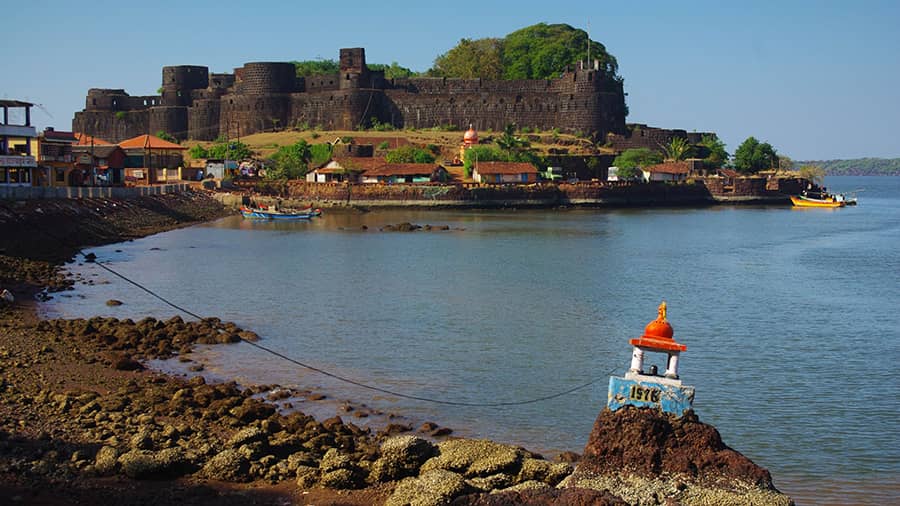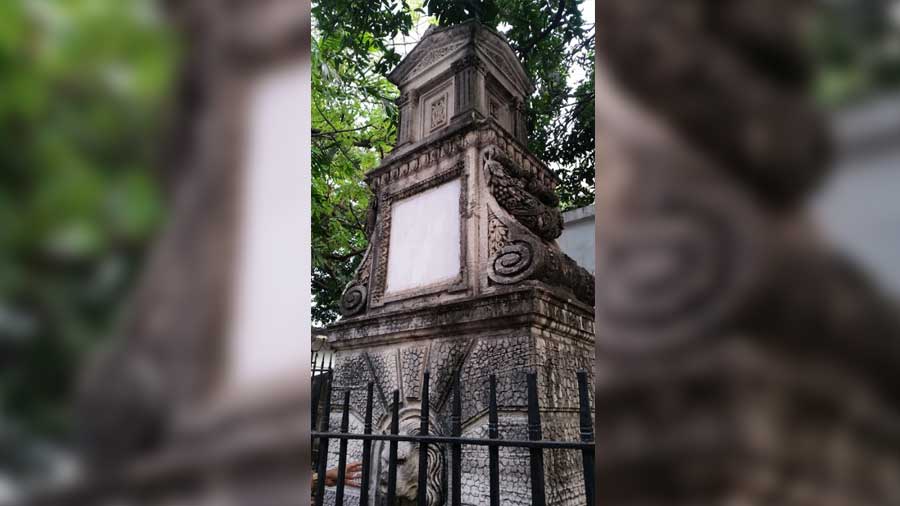The forts of Maharashtra hold a unique charm for lovers of history all over India. Numerous such edifices dot the coastal state, and among them is the magnificent Vijaydurg Fort. Located on the Sindhudurg coast, the fort has fallen into a perilous state of disrepair in recent times. But its intimate connection to Maratha history makes it a spot worth visiting.
Inside the Vijaydurg Fort
The formidable structure of Vijaydurg — literally meaning ‘victory fort’ — once the naval headquarters of the Marathas, makes it quite a sight to behold. Sitting on the edge of the coast, the laterite fort is surrounded on three sides by the waters of the Vaghotan creek, sometimes also referred to as Vaghotan River, which opens up to the Arabian Sea.
As one enters the fort, a pathway running along the main wall of Vijaydurg takes the visitor to the inner quarters. At the entrance of the quarters is a huge, open courtyard where a cannon and several cannonballs are on display.
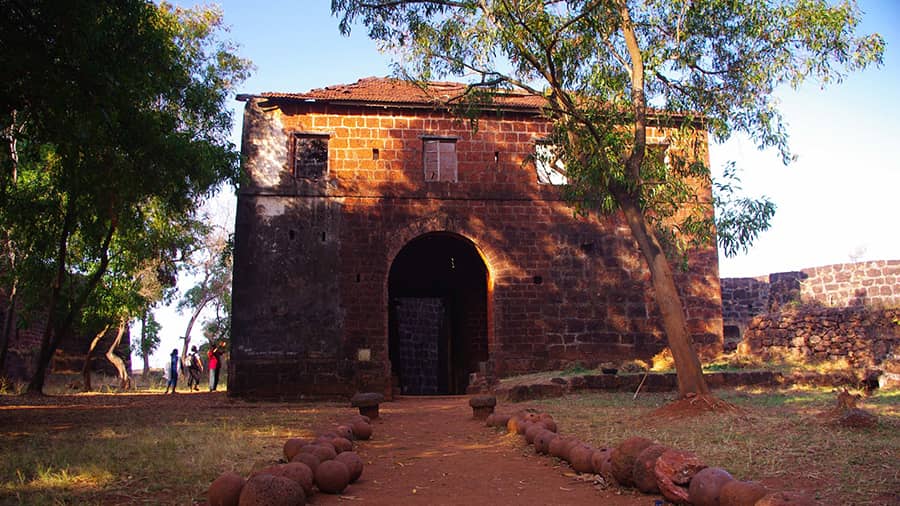
Cannonballs on display at Vijaydurg fort
Turning left from the gate, a stone-built house meets the eye. It was once a khalbat-khana or a secret meeting room. A few steps from the khalbat-khana lead to the top of the fort wall. Once, one could walk along the wall and tour the entire premises. Now, a part of the wall has collapsed, and tourists are not allowed there.
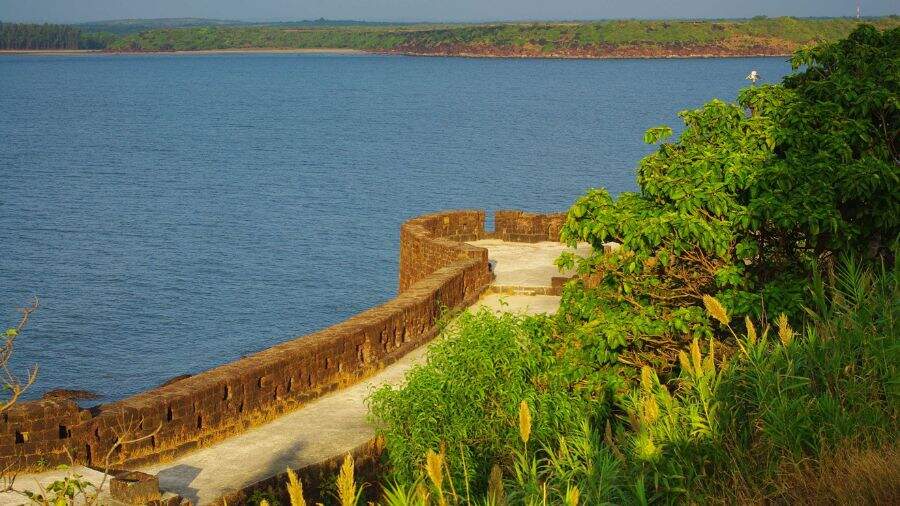
The fort's wide ramparts and bastion offer a stunning view of the sea
The bastion provides an incredible view of the road below, the Vaghotan creek, and a dock in the distance. One can see motorised fishing boats moving up the creek towards the estuary. To those who are familiar with the pages of history, these boats may be reminiscent of the Maratha gallivats and grabs which could collectively attack large Portuguese ships.
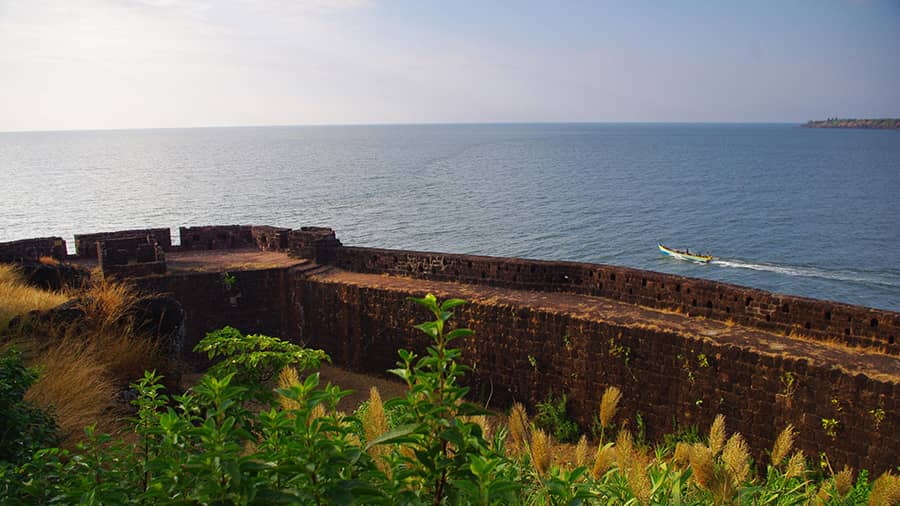
Fishing boats coast along the water to the estuary
After coming down from the bastion, the ammunition depot is the next spot to check out. There is also the courthouse of Kanhoji Angre, the great Maratha naval admiral for whom Vijaydurg had served as a station for military troops. A tunnel originates nearby, connecting this part of the fort to another.

A long tunnel connects one part of the fort to another
There are other minor structures one can look forward to. There’s the Rani Mahal, a tank that could store fresh water in case of a prolonged siege, a soundproof council hall, a two-storied warehouse and a shrine dedicated to goddess Bhavani, the beloved deity of Shivaji and his followers.

A structure inside Vijaydurg fort believed to be a storehouse
Recent excavations have also led to the discovery of huge underwater stone structures on the western side of the fort. They are believed to have been built by the Marathas so that no ship could come too close to the fort, making it almost impregnable.
The fort has been a witness to major events in Maratha history, and the still-intact gun emplacements and cannonballs are a reminder of how the past still lingers in the nooks and crannies of Vijaydurg.
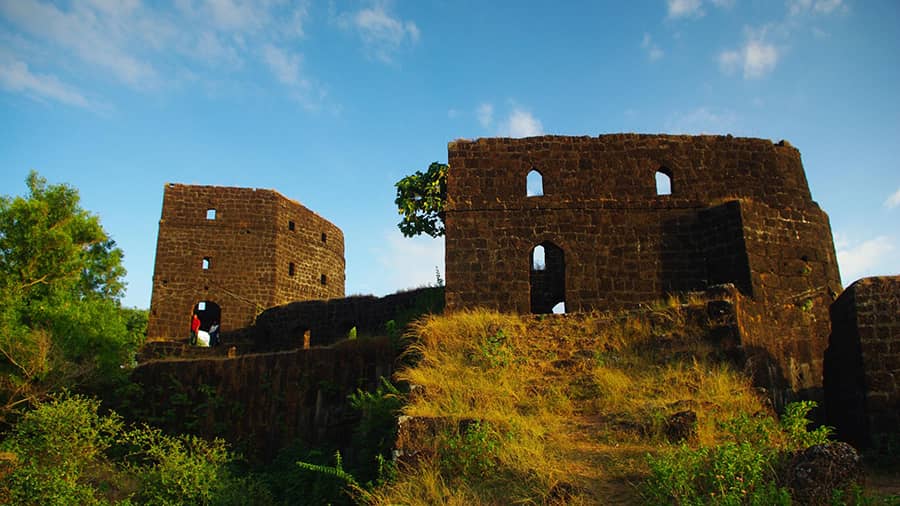
Remains of a queen's palace, or Rani Mahal, inside Vijaydurg fort
Important dates in the history of the fort
The appeal of the fort lies in its history and the instrumental role it played for the Marathas who valiantly defended their territory.
- 1193-1205: The time span during which Vijaydurg, originally known as ‘Gheria,’ and often referred to as the ‘Eastern Gibraltar’ is believed to have been built.
- 1653: After the Bahamanis who ruled from 1431 to 1490, and the Adil Shahi dynasty of Bijapur that reigned for 140 years, Shivaji Maharaj took control of the fort, bringing Vijaydurg into the heart of Maratha politics and warfare.
- 1698: Kanhoji Angre, the Maratha naval commander under Shivaji’s and Sambhaji’s successor Rajaram Bhosle I, made Vijaydurg the capital of his coastal territory.
- 1707-1713: After the death of Aurangzeb, Sambhaji’s son Shahu Bhosle I was released and challenged Rajaram’s widow, Tara Bai and son Shivaji II’s claim to the throne. Tara Bai retreated to a region in Kolhapur in 1713 and Kanhoji Angre pledged allegiance to Shahu.
- 1717-1724: As admiral under Shahu’s rule, Angre repulsed an English naval attack on the fort, routed a Portuguese-English alliance, and defended the fort against a Dutch attack, defeating the attackers.
- 1729: Kanhoji Angre dies. In the next few decades, the fort attracted the attention of Maratha prime minister Balaji Baji Rao, who was keen to capture the forts of the Angres with help from the British.
- 1756: Attack on the fort and fall of Vijaydurg. Robert Clive captured the fort with his naval forces.

A painting titled ‘The capture of Geriah, February 1756’ drawn by Dominic Serres in 1771 Wikimedia Commons
While returning from a tour of Vijaydurg, sometimes a golden sunset over the Arabian Sea reminds one of the fire that engulfed the entire Maratha fleet, leading to the fall of the fort. As neglect and indifference from the authorities slowly gnaw away at the edifice, one wonders how much longer the once-invincible Vijaydurg Fort can stand the test of time.
